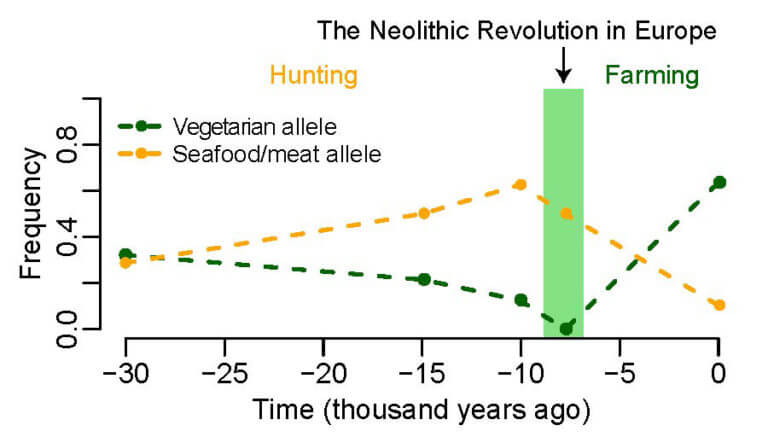The genes of Europeans reflect the dietary shifts that occurred with the rise of farming, report researchers.
Before the Neolithic revolution, European populations were hunter-gatherers who ate animal-based diets and some seafood. But after the advent of farming in southern Europe around 8,000 years ago, which spread northward thereafter, European farmers switched to primarily plant-heavy diets.
…
The study finds that adaptations occurred in an important genomic region that includes three fatty acid desaturase (FADS) genes. Different versions of the same FADS1 gene, called alleles, corresponded to the types of diets that were adopted.
…
Based on one’s ancestry, clinicians may one day tailor each person’s diet to her or his genome to improve health and prevent disease….

The study shows that plant-heavy diets of European farmers led to an increased frequency of an allele that encodes cells to produce enzymes that helped farmers metabolize plants. Frequency increased as a result of natural selection, where veggie-eating farmers with this allele had health advantages that allowed them to have more children, passing down this genetic variant to their offspring.
[Read the full study here (behind paywall)]
The GLP aggregated and excerpted this blog/article to reflect the diversity of news, opinion, and analysis. Read full, original post: Switch from meat to veg marks Europeans’ genes































